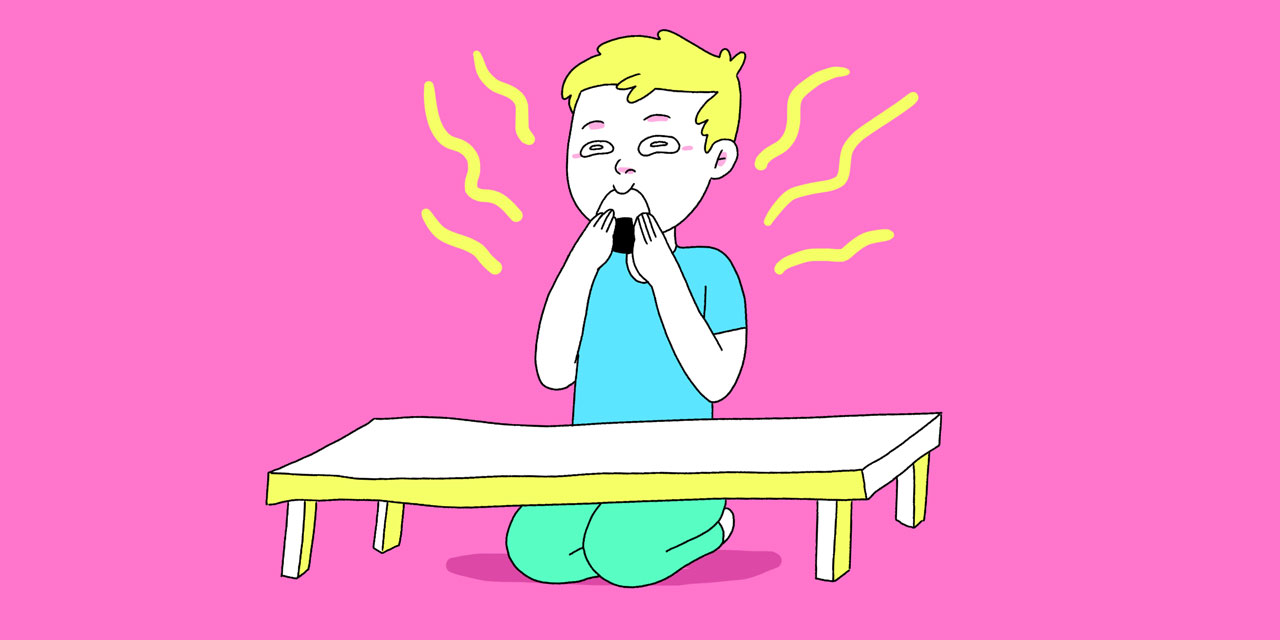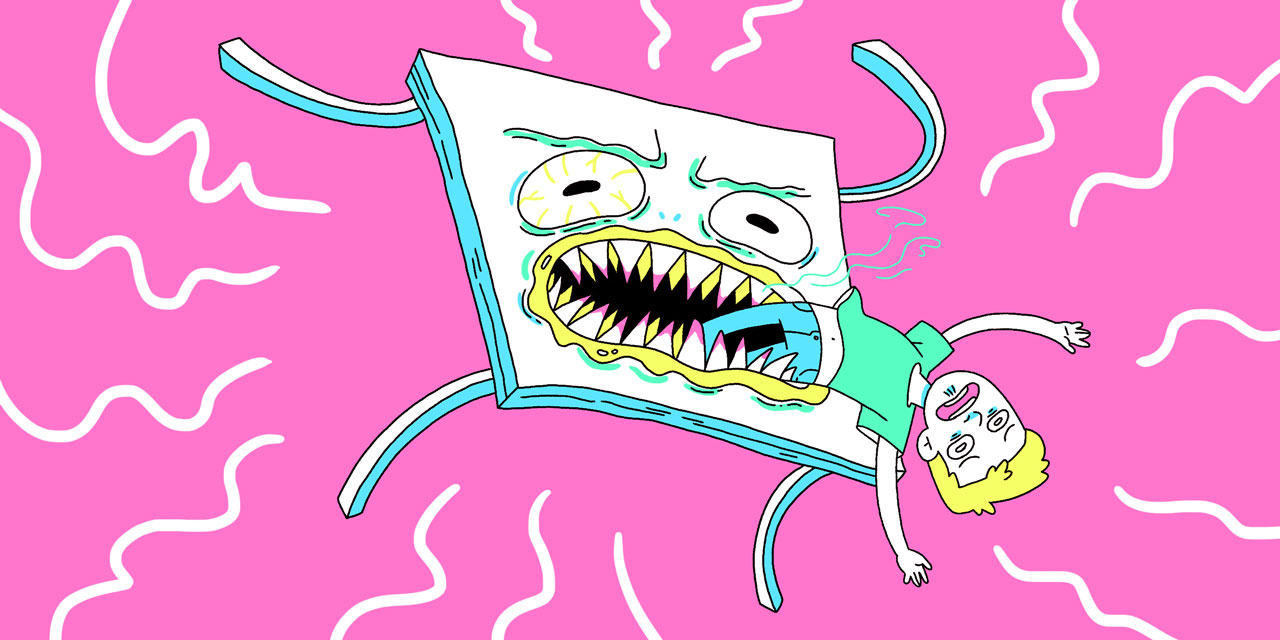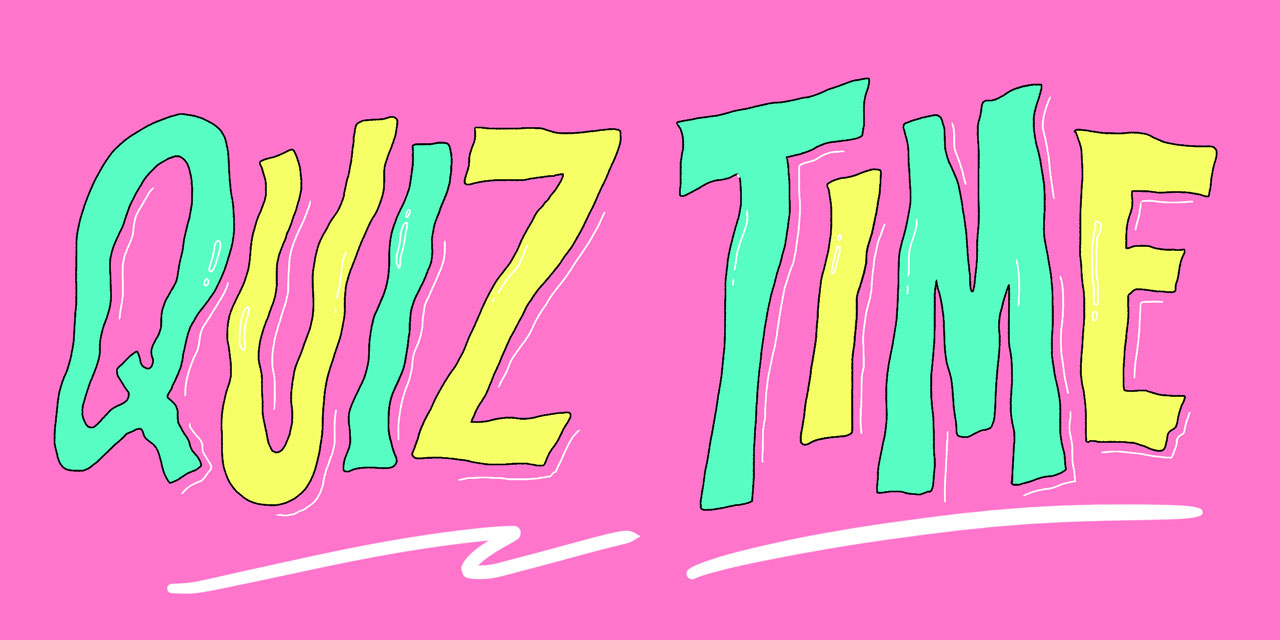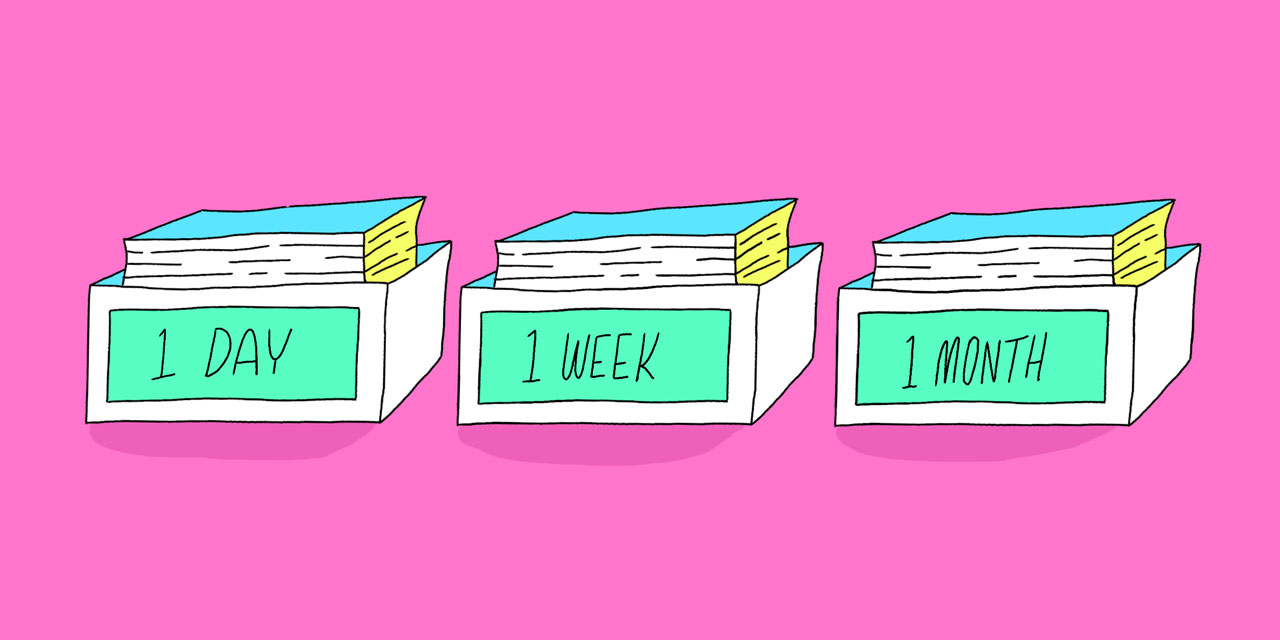When it comes to learning Japanese vocabulary, very few people actually enjoy rote memorization. Yet, that's how most people go about it. But in terms of time, pain, and efficiency, mnemonics (and a little bit of spaced repetition) are the way to go. This article goes over the easiest of all the Japanese mnemonic techniques: the Keyword Mnemonic Method.
In terms of time, pain, and efficiency, mnemonics are the way to go.
After going over the method, we'll demonstrate its application and learn ten Japanese vocabulary words. You'll be quizzed at the end of the article and get 70–80% of the answers correct.
First, what exactly is the Keyword Mnemonic Method and how can you use it to memorize Japanese vocabulary? Let's use the word たべる (taberu/to eat) as an example of the two-step process each word goes through:
- Start with the word you're learning たべる (taberu) and associate it with a keyword from your native language (in this guide, I'll say "English" instead of "your native language" from now on). This keyword should have something to do with the word you're learning. For example, with たべる, you might associate the keyword table to taberu. It's a bit of a stretch, but you can see where I'm getting "table" from, right? And, yes, I'll address in the next section why the る (ru) portion of たべる gets dropped.
- Now, associate the keyword table with the meaning of the word in English. Ideally, this keyword will interact (in your imagination) with the English meaning of the word. More on this in the next section, too. Since our keyword is table, we could say, "the table is where we are going to eat." You think of a table (which comes from たべる), and the interaction is that you are going to eat on the table. Table is the keyword, or the hook, that triggers the recall of the answer: "to eat."

These two steps make up the basics of the Keyword Mnemonic Method. Although I wouldn't say there are any hard rules for how you must use this strategy, I have many suggestions that will make your studies go more smoothly:
If you can imagine something crazy enough, your brain will take notice and try to remember it more clearly.
- If possible, the keyword should be something you are able to imagine in your mind's eye. I like to use nouns (persons, places, or things), because they are much easier to visualize in your head than anything else. If you can't use a noun, you can't use a noun. But, use one when you are able.
- The keyword and the English definition should have some kind of interaction. With the example of たべる (taberu), you might want to imagine yourself going to the table, sitting down, and eating. You may spend a moment imagining the quality of the table, and thinking how much you love eating at this table.
- Interaction between the keyword and the English definition should be simple yet bizarre. If you can imagine something crazy enough, your brain will take notice and try to remember it more clearly. This is what's known as a "flashbulb memory." For example, instead of going to eat at the table, you can imagine the table trying to eat you (and also the gruesomeness of the table's mouth and teeth, and the ridiculously articulated "nom nom nom" eating sounds it's making). Don't go too off the rails, though. If you introduce too many unnecessary parts, the connection between this mnemonic and the actual memory you are trying to recall becomes cloudy. Focus on one interaction, and make that one interaction weird.
- Try to include a couple of your senses in your imagined interaction. For example, we could include an imagined pain in your legs, due to the table trying to eat them. Or the rancid smell coming out of the table's mouth. You know how you're filled with memories of your grandma putting you into the oven whenever you smell apple pie? This follows that concept.
- You don't have to use the entire (Japanese) word to create the keyword. With たべる, we just used the たべ (tabe) portion. If you use only part of a word (preferably half or more), you will still be able to quite effectively recall the keyword and finish the interaction. You don't need to use the whole word to make a keyword every single time. Work with what you got.
- Mnemonics can be a stretch. That's okay! The goal is to help you to recall the actual answer, not for it to be the actual answer. Sometimes you have to make a mnemonic that barely has any connection at all. Most of the time, this will be enough. It's like building a bridge. Even if there's holes in the bridge, if they're not too big you'll be able to jump over them.
- Finally, remember not all words can be turned into a good keyword mnemonic. Sometimes, it's more work to make a mnemonic than it is to learn something with just rote memorization. Pick and choose your mnemonic battles.
That's a lot to remember, but with practice you'll get used to making mnemonics and it will become natural. At first, it will take a while to make a mnemonic and imagine your way through it. But as you do more of these, you'll find yourself creating mnemonics in five to ten seconds. In the grand scheme of things, that's not long at all.
Let's Practice the Keyword Mnemonic Method
The best way to get better at this is practice. I'm going to walk you through how I would learn some Japanese vocabulary using this method. Read through each keyword mnemonic example and explanation, and do your best to imagine the interaction between the keyword and the English definition. After you're done, you'll be tested on the English meanings of these ten words.
Note: This keyword method is more effective if you make up your own mnemonics, but I think you'll still find yourself able to memorize a lot of these words even if you use mine.
食べる / たべる / taberu / to eat

The たべ (tabe) portion of たべる (taberu) sounds like "table." Imagine a table. Walk up to it, and feel its grain. It is a beautiful table. Suddenly, as you are petting it, a mouth opens up with rows of sharp teeth, and grabs your arm. It's trying to eat you! The table is making "nom nom nom" sounds, and there is a rancid smell coming from its mouth. Also, your arm is in horrible pain. "This table is trying to eat me!" you yell.
女 / おんな / onna / woman
おんな (onna) sounds like "owner." Imagine you're in a shop and ask to speak with the owner. A woman walks out, and you talk to her. Now go to another shop, and ask for the owner there. A different woman walks out and greets you. Now go to a third shop and ask for the owner. Once again, a woman comes out! This is because you now live in a country where only women can own things. Women are the owners.
頭 / あたま / atama / head
あたま (atama) can be broken down to "at AMA." AMA stands for "ask me anything," and refers to a session where someone (usually online) answers questions people ask on a forum or site like Reddit. Anyway, you are at an AMA. It is your AMA. People are asking you all kinds of questions about your head. Perhaps you have some kind of head-related condition that is very interesting, and that's why you're doing an AMA in the first place. Think of some head questions people might ask you, and imagine yourself answering them at your AMA.
心 / こころ / kokoro / heart
Let's just use the ここ (koko) portion of (こころ). This way we can use the keyword cocoa. When you think of cocoa, your heart becomes happy.
Alternatively, you could use all the sounds in the word and think about how cocoa (ここ/koko) and fish roe (ろ/ro) are the things that power your heart. Imagine opening up your chest and pouring a goopy cocoa / fish roe concoction in there. Ah, your heart feels much better.
Note: 心 (kokoro) refers less to your actual physical heart, and more to your heart spirit. But, for now this is close enough. Sometimes you have to learn slightly wrong things to get to the right things. Learning a language is a long process of experience and context, and learning 心 as your physical heart won't hurt you in the long run.
本 / ほん / hon / book
ほん (hon) sounds like the English word "hone." There are few phrases that come to mind when you think of the word "hone." One is "to hone in on," and the other is "to hone one's skills." Either way, you can imagine yourself honing in on a book, so you can hone your skills (books help with this). Imagine yourself honing in on a book, and getting great info out of it. Then, move on to another book and hone in on that.
肉 / にく / niku / meat

にく (niku) could be your friend Nick, or a famous Nick you know about and can imagine (Nicolas Cage, perhaps?). Imagine this particular Nick. Now, imagine them without skin. All you can see is their meat, and what delicious looking meat it is. Go over and ask Nick for some of their meat. They oblige and cut off a little Nick steak for you to try. "Nice to meat you," they say, because they're an idiot that loves puns.
死ぬ / しぬ / shinu / to die
しぬ (shinu) sounds like "she knew." Think of a woman, and think about how she knew what we did last summer. And because of that, she says it's time for you to die. Imagine this conversation going down, and the fear that goes with someone threatening you like this. She knew!? I thought we covered things up! I thought nobody saw us do it! Am I going to die?
聞く / きく / kiku / to hear
きく (kiku) sound like kick. Imagine taking a strong kick to the head. After you get kicked in the head, you are suddenly able to hear! Before that, you were deaf, but this sharp kick knocked some brain stuff around, and you are able to hear again. Feel the overwhelming emotion you'd probably feel if this happened. There is pain from the kick, sure, but you're able to hear! That's a miracle!
黒い / くろい / kuroi / black
The くろ (kuro) in くろい (kuroi) sounds kind of like the word "crow." If you think of a crow, what do you see? A lot of black. That's probably their most defining feature, how black they are.
持つ / もつ / motsu / to hold
もつ (motsu) sounds like "moats." This will be a little weird, but imagine you have some moats in your hands. I don't know how you'll do it, but you want to focus on the act of trying to hold the moats. They are made of dug out dirt and water, of course, so it's difficult, but that will help with the visual. Maybe you try to pick up more moats too, because you're some kind of giant moats hoarder who clearly has a problem and needs help.
Are you ready to quiz yourself? Don't look at the list above, and see how many English meanings for these words you can remember. Feel free to spend a little time on the recall step. Most likely you'll have to work through the mnemonic of each one to remember the answer, but that's a good thing. The struggle tells your brain it's important to remember (assuming you actually recall it without cheating in the end). If you really can't remember the answer, just move on to the next word. You can look up the answer after you're finished.

- 食べる / たべる / taberu
- 女 / おんな / onna
- 頭 / あたま / atama
- 心 / こころ / kokoro
- 本 / ほん / hon
- 肉 / にく / niku
- 死ぬ / しぬ / shinu
- 聞く / きく / kiku
- 黒い / くろい / kuroi
- 持つ / もつ / motsu
How did you do? Considering how little time you spent learning these words, even if you get 50% that's honestly not bad. Most likely, you got around 70–80% correct, though, if you really put effort into your imagination.
Sadly, this incredible ability to recall these words will go away in a week or so. You will have to do more with these words if you want to make them into long-term parts of your memory. Fluency takes repetition, and for the most efficient repetition possible we turn to SRS.
Adding Words to Your Spaced Repetition System (SRS)

Because a mnemonic method only puts vocabulary into your short-term memory, we have to do something to get it to a point where recall feels fluent. What is vocabulary fluency, exactly? Think of the difference between these two questions:
Question A: What is 35 x 5?
Question B: What is 1 + 1?
Question A requires you to think. You can feel the cogs turning in your head, and eventually it will output an answer. Question B requires no thinking (I hope!) and you spit it out immediately. This is the difference between a fluent word and a not-fluent word.
A spaced repetition system (SRS) is a process that changes a word from that Question A (not-fluent) feeling into the Question B (fluent) feeling.
In a nutshell, a spaced repetition system is just a smart set of flashcards. The main difference is the adjustment between review times for individual items. Each system has its own secret algorithm, but in the end an SRS's goal is to get you to recall an item right before you're about to forget it, creating the strongest memory. To do this, it changes the spacing between review times depending on your right/wrong answer to the card the time before.
If the SRS thinks you know an item really well, it may be months before you see it again. If you're really bad at an item, it will show it to you more often.
Each system has its own secret algorithm, but in the end an SRS's goal is to get you to recall an item right before you're about to forget it, creating the strongest memory.
The purpose of a mnemonic is to help you recall the answer to a card the first few times. Then as you get better, you'll shed the mnemonic and the fluency of Question B's "1+1" will begin to emerge, until you know the word like it's your own native language.
Mnemonics, combined with SRS, are a potent combination. To learn more about SRS, check out our Spaced Repetition Systems for Learning Japanese page.
That's it! I hope you give mnemonics a try. Initially, I thought they were hokey bottles of snake oil. But after trying them, I realized the error of my ways. Now I'm behind them 100%.
But, the Keyword Mnemonic Method just gets you started. It only teaches you how to memorize a word, not how to read its kanji. If you don't want to be illiterate, and want to try a more full-featured mnemonic method, I recommend WaniKani. Alternatively, check out our series on mnemonic methods for learning Japanese.
Good luck, and, oh yeah! Do you remember what にく (niku) is in English? Go ahead, I'm waiting…
Enjoyed our article about the keyword mnemonic method for Japanese vocabulary learning? We recorded a podcast episode about it as well, so check it out!
…Or, heard enough about mnemonics? Okay — fine, then. We have more useful-for-Japanese-learners episodes, so go find whatever it is that piques your interest!
